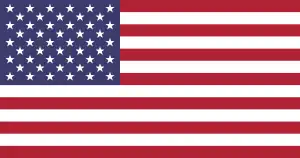| Singles | |
|---|---|
| 1972 World Championship Tennis Finals | |
| Champion | |
| Runner-up | |
| Score | 4–6, 6–0, 6–3, 6–7(3–7), 7–6(7–5) |
In the 1972 World Championship Tennis Finals - Singles, Ken Rosewall was the defending champion, having previously won the tennis competition, and won in the final 4–6, 6–0, 6–3, 6–7(3–7), 7–6(7–5) against Rod Laver.[1] Of particular note, the final is credited as the "match that made tennis in the United States" because its unprecedented domestic television audience of 23 million fueled a massive increase in the sport's popularity.[2][3]
Seeds
A champion seed is indicated in bold text while text in italics indicates the round in which that seed was eliminated.
.svg.png.webp) Rod Laver (final)
Rod Laver (final).svg.png.webp) Ken Rosewall (champion)
Ken Rosewall (champion) Arthur Ashe (semifinals)
Arthur Ashe (semifinals).svg.png.webp) Cliff Drysdale (quarterfinals)
Cliff Drysdale (quarterfinals) Marty Riessen (semifinals)
Marty Riessen (semifinals) Tom Okker (quarterfinals)
Tom Okker (quarterfinals) Robert Lutz (quarterfinals)
Robert Lutz (quarterfinals).svg.png.webp) John Newcombe (quarterfinals)
John Newcombe (quarterfinals)
Draw
Key
- Q = Qualifier
- WC = Wild card
- LL = Lucky loser
- Alt = Alternate
- SE = Special exempt
- PR = Protected ranking
- ITF = ITF entry
- JE = Junior exempt
- w/o = Walkover
- r = Retired
- d = Defaulted
- SR = Special ranking
| Quarterfinals | Semifinals | Final | ||||||||||||||||||||||||
| 1 | 6 | 6 | 6 | |||||||||||||||||||||||
| 8 | 4 | 4 | 4 | |||||||||||||||||||||||
| 1 | 4 | 4 | 6 | 6 | 6 | |||||||||||||||||||||
| 5 | 6 | 6 | 1 | 2 | 0 | |||||||||||||||||||||
| 4 | 7 | 6 | 2 | 5 | 3 | |||||||||||||||||||||
| 5 | 5 | 4 | 6 | 7 | 6 | |||||||||||||||||||||
| 1 | 6 | 0 | 3 | 7 | 65 | |||||||||||||||||||||
| 2 | 4 | 6 | 6 | 6 | 77 | |||||||||||||||||||||
| 6 | 4 | 1 | 3 | |||||||||||||||||||||||
| 3 | 6 | 6 | 6 | |||||||||||||||||||||||
| 3 | 4 | 2 | 6 | |||||||||||||||||||||||
| 2 | 6 | 6 | 7 | |||||||||||||||||||||||
| 7 | 1 | 6 | 3 | 6 | 1 | |||||||||||||||||||||
| 2 | 6 | 3 | 6 | 4 | 6 | |||||||||||||||||||||
References
- ↑ "ATP – 1972 Dallas WCT Men's Singles Draw". ATP.
- ↑ "1972: The Rod Laver vs. Ken Rosewall WCT Final in Dallas". tennis.com.
- ↑ Only one match has since had a larger U.S. TV audience: the legendary Battle of the Sexes the following year, signifying how popular tennis had become during this boom period.
This article is issued from Wikipedia. The text is licensed under Creative Commons - Attribution - Sharealike. Additional terms may apply for the media files.